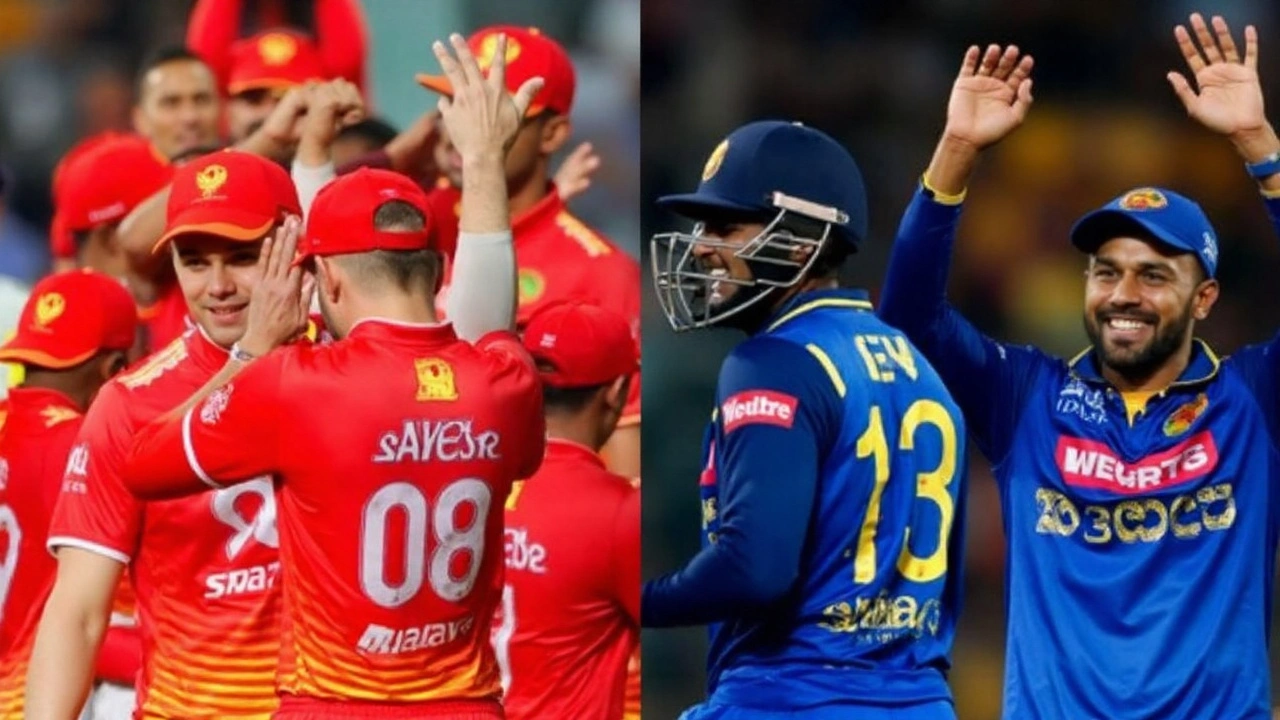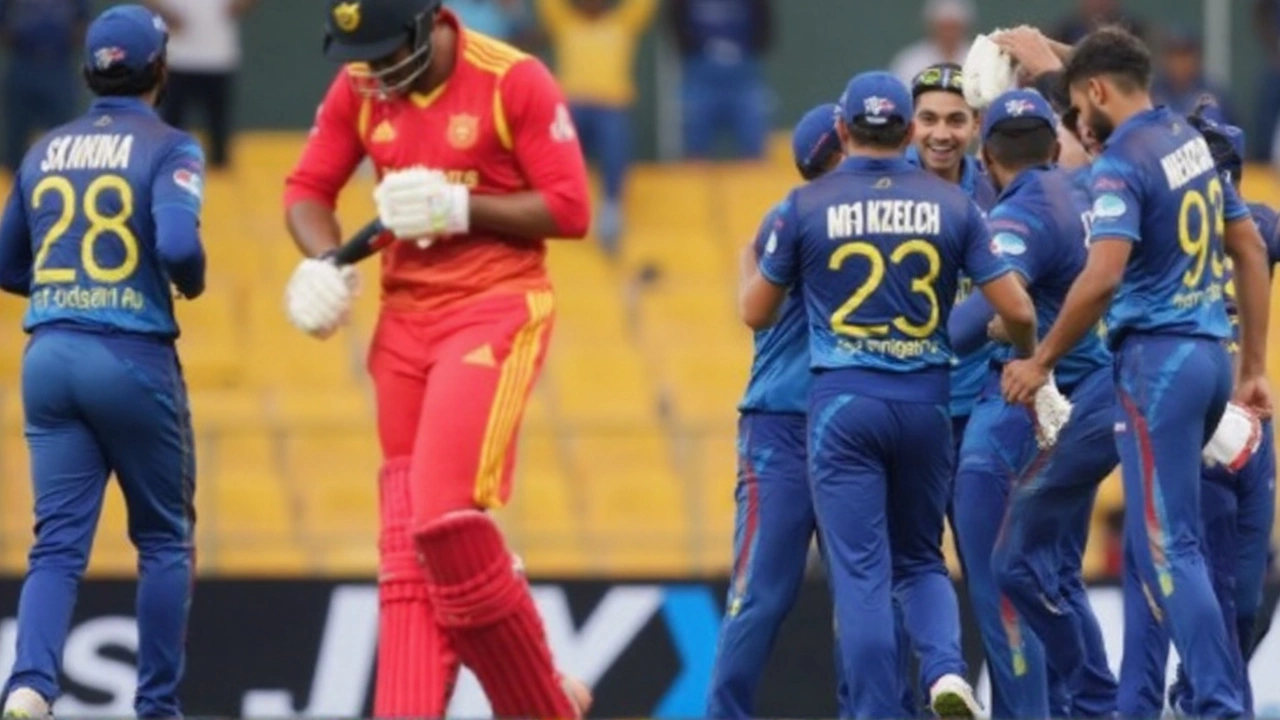Raza and Evans rip through Sri Lanka as Zimbabwe force series decider
Eighty. That’s all Sri Lanka managed in a match they started as favorites. The Zimbabwe vs Sri Lanka 2nd T20I in Harare flipped the script fast, with Zimbabwe bundling the visitors out for 80 in 17.4 overs and jogging to 81/5 in 14.2. Sikandar Raza walked off with Player of the Match, Brad Evans did the early damage, and a noisy Harare crowd got the finish they came for—a 1-1 scoreline and a live series.
This result stings for Sri Lanka because the numbers before the game felt one-sided. They led the head-to-head 6-1 in T20Is. The pitch, too, looked friendly enough for a modern white-ball lineup: average first-innings score around 142, some swing and seam up top, then a surface that gradually grips for the spinners. On paper, that’s fair. In practice, Zimbabwe read it better, started stronger, and never let up.
The toss call set the tone. Zimbabwe chose to bowl, knowing Harare’s new ball can talk early. Evans hit the right length, found life off the deck, and kept stumps and chest-high bounce in play. Edges, mishits, and false starts piled up. Raza took over through the middle, taking pace off and forcing mistakes as the surface slowed. No Sri Lankan batter crossed 20, which tells you how relentless the pressure felt and how quickly the innings unraveled.
Bowling plans were clear and simple. Evans stayed disciplined—back of a length, hard into the pitch, with enough movement to keep batters guessing. Raza varied his speeds and gave the ball time to grip. Richard Ngarava and Blessing Muzarabani backed them up by owning their areas, squeezing singles and forcing big shots from poor positions. Zimbabwe’s fielding matched the bowling: clean takes, smart lines to the ball, and no free boundaries.
The shape of the innings barely changed from powerplay to death. Sri Lanka couldn’t stitch together a partnership to reset the innings. When the ball was hard and new, seamers got movement. When it softened, spinners got grip. That’s Harare in a nutshell, and Zimbabwe executed that blueprint well. The difference was less about magic deliveries and more about accuracy and repeatable plans.
The chase wasn’t flashy. It didn’t need to be. Zimbabwe didn’t mind taking time because 81 doesn’t demand miracles. There were a few jitters—five down is more than the dugout would’ve liked—but the ask was small, and the home side stayed calm. Raza’s presence steadied things, and the senior core kept the scoreboard ticking without gifting Sri Lanka a door back into the game.
Here are the key details at a glance:
- Match: 2nd T20I, Harare Sports Club, September 6, 2025
- Toss: Zimbabwe elected to bowl
- Sri Lanka: 80 all out (17.4 overs)
- Zimbabwe: 81/5 (14.2 overs) — Zimbabwe won by 5 wickets
- Player of the Match: Sikandar Raza
- Series score: 1–1
Beyond the result, the win matters for belief. Sri Lanka entered with a 6-1 head-to-head stranglehold. After this, it’s 6-2, and Zimbabwe know their plan works on home soil. When your best bowlers hit the top of off and your captain controls the middle overs, the game feels simpler. That’s what Zimbabwe achieved.

Pitch pattern, selection calls, and the road to the decider
The Harare Sports Club pitch stayed true to its reputation. It offered something for everyone: early carry and seam for quicks, then grip and variation for spinners. The average first-innings T20 score here hovers around 142, and teams batting first win roughly half the time. In short, it’s balanced, so execution beats reputation. Zimbabwe’s choice to bowl first lined up with that reality, and the bowlers cashed in.
Zimbabwe’s squad construction has a practical edge. The attack blends pace and height—Evans, Ngarava, Muzarabani—with Raza’s game sense through the middle. That mix suits a surface that shifts across 40 overs. With the bat, experience sits around Sikandar Raza and Sean Williams, while Ryan Burl and others add hitting options and coverage if early wickets fall.
Sri Lanka will know this was a collective miss rather than one bad shot. Against a deck like Harare, the top order has to respect the first dozen balls: play late, keep the face straight, and leave the cross-batted hits for later. Rotating strike through the middle matters more here than brute force. If they bat first in the decider, setting 150+ should be the goal; that brings their spinners in and flips pressure back to Zimbabwe.
What changes could both sides consider?
- Sri Lanka’s batting approach: Aim for a powerplay around 45–50 with minimal damage. Two wickets down is survivable; three down invites a collapse when the pitch slows. Use the sweep and the drop-and-run against spin to avoid getting stuck.
- Zimbabwe’s bowling plan: Stick to the method. Hard lengths early, dry up the easy singles, and hand the middle overs to Raza with attacking fields. The fielding intensity from the second T20I is the standard to match.
- Death overs: Hit the deck and use cutters. On this track, pace-off at good lengths beats full-and-straight unless the ball is reversing or the set batter forces a change.
- Match-ups to watch: Raza versus Sri Lanka’s middle order; Evans versus the top three; Sri Lanka’s finger spinners against Williams and Burl if they settle in.
Selection-wise, Zimbabwe don’t need to tinker much. Their blend clicked. Keeping Evans, Ngarava, and Muzarabani in rhythm matters more than novelty. Sri Lanka may think about strengthening the engine room with a stabilizer who can bat deep and let the hitters go hard around him. Even without wholesale changes, a clear batting plan—minimize damage early, accumulate in the middle, surge last five—would shift the feel of the contest.
The decider will likely be played on a surface that has seen enough cricket to offer even more to spinners. That makes timing and strike rotation critical. Batsmen who can manage the ball into gaps will outlast those who only hunt the boundary. For captains, the toss will tempt a repeat of this game’s script: bowl first, chase later. But if the surface looks dry from ball one, batting first and leaning on spin might well be the braver call.
Two takeaways linger from this match. First, Zimbabwe’s method suits this venue: disciplined seam to start, savvy spin in the middle, catch everything. Second, Sri Lanka’s batting needs a reset, not a reinvention. A tighter start and fewer risky swings early could be enough to put them back in control. That’s why the decider feels wide open. One good powerplay either way, and this series swings hard.
For now, Zimbabwe have the momentum, Raza has the trophy under his arm for Player of the Match, and Harare has its decider. If the first two games are a guide, small details will pick the winner: a tight over, a sharp catch, or a brave spell when the ball stops coming on. Bring on game three.

